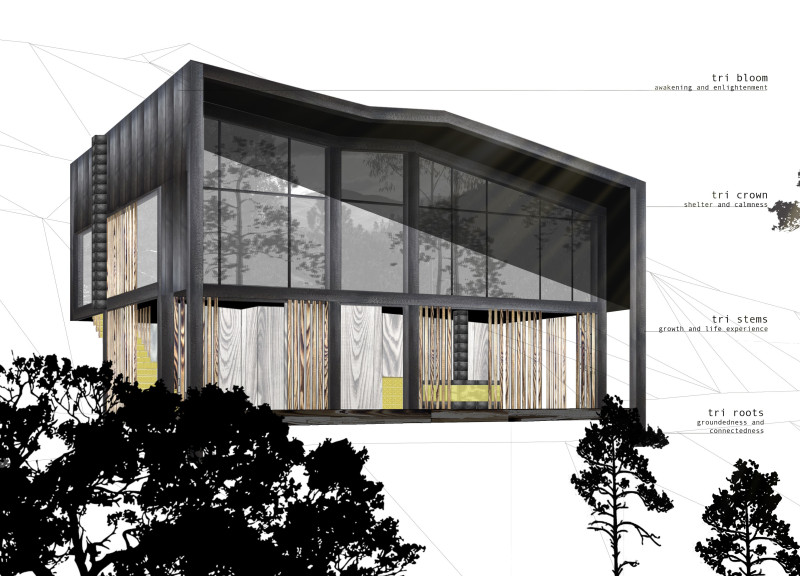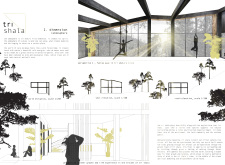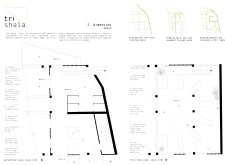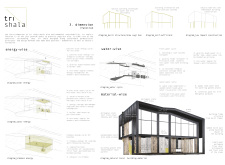5 key facts about this project
Natural harmony is a cornerstone in the design of this retreat. The building's orientation and form maximize connection with its landscape, portending a commitment to sustainability and the well-being of users. The architectural layout comprises an open yoga studio, which provides an unobstructed space of 80 square meters for various practices, allowing adaptability for group sessions and individual reflection.
Sustainable architecture is evident throughout the project, using local materials and energy-efficient technologies. Key features include:
Materiality and Construction
The retreat utilizes a careful selection of materials that reflect both aesthetic considerations and environmental responsibility. Burnt pine wood panels not only enhance durability but also resonate architecturally with the local natural environment. Portuguese slate roof tiles contribute to the building’s longevity, while cork insulation ensures energy efficiency. A glass façade facilitates natural light and provides expansive views of the wooded surroundings, enhancing the overall experience of being in nature. Seam-permeable wooden screens add layers of privacy while allowing airflow, thus optimizing indoor environmental conditions.
Integration with Nature
A defining characteristic of the Tri Shala Yoga Retreat is its seamless integration with the surrounding landscape. The design emphasizes open spaces and transitions to the natural environment. Garden areas, wildflower patches, and water purification systems are not merely ornamental aspects; they play a functional role in maintaining ecological balance, contributing to biodiversity, and enriching the retreat's aesthetic. These elements serve to blend the built with the natural, fostering an atmosphere conducive to reflection and mindfulness.
Innovative Energy Solutions
The project adopts innovative energy solutions through the incorporation of renewable energy sources. Solar panels harness sunlight, while biomass systems efficiently manage energy consumption on-site. This approach reflects a comprehensive understanding of ecological requirements and sets a standard for sustainable architectural practices.
The Tri Shala Yoga Retreat stands as an exemplary project that balances function, user experience, and environmental stewardship. The unique design strategies employed here differentiate it from other wellness retreats, creating a focused environment that enhances personal growth and promotes ecological mindfulness. For a deeper exploration of this project's architectural plans, architectural sections, and specific architectural ideas, readers are encouraged to examine the full presentation of the Tri Shala Yoga Retreat.


























